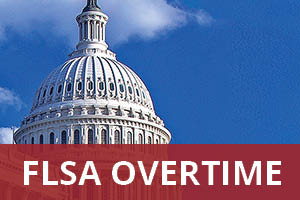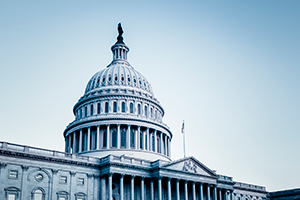President Trump issued an executive order last month instructing federal officials to “reach and surpass” a million new active apprenticeships. It was an ambitious target that apprenticeship advocates celebrated, anticipating new federal investments in more paid on-the-job training programs, in new industries and via a more efficient system.
“After years of shuffling Americans through an economically unproductive postsecondary system, President Trump will refocus young Americans on career preparation,” federal officials wrote in a fact sheet on the order. They also emphasized that the federal government spends billions on the Workforce Investment and Opportunity Act, or WIOA, and Career and Technical Education, but “neither of these programs are structured to promote apprenticeships or have incentives to meet workforce training needs.”
Ryan Craig, author of the book Apprenticeship Nation, managing director of Achieve Partners, co-founder of Apprenticeships for America and an occasional contributor to Inside Higher Ed, said it was the first time a president set a goal for the number of apprentices in the U.S., as far as he’s aware.
Apprenticeships are “one of the few, perhaps the only area of education, of workforce development, where this administration has said, ‘We want more of this,’” he said shortly after the executive order dropped.
But the excitement for an expanded apprenticeship model in the U.S. might be short-lived. Craig and other apprenticeship advocates worry that Trump’s proposed budget for fiscal year 2026 doesn’t reflect the executive order’s vision. The proposal doesn’t promise any significant new investments in apprenticeship and slashes workforce development spending over all.
“The left hand doesn’t know what the right hand is doing here,” Craig said. “It’s not the sea change that the executive order promised.”
Mixed Signals
Among many highlights for advocates, the order also calls for a workforce development strategy with a focus on scrutinizing workforce programs’ outcomes, which currently aren’t carefully tracked.
Federal officials were given 90 days to review all federal workforce development programs and come out with a report on strategies to improve participants’ experiences, measure performance outcomes, identify valuable alternative credentials and reform or nix ineffective programs. The executive order also generally called for more transparent performance outcomes data, including earning and employment data, for such programs.
Trump’s skinny budget makes good on his promise to consolidate workforce development spending and cut programs the administration deems ineffective, but it also offers apprenticeships a small slice of that shrinking pie.
The proposal includes a $1.64 billion cut to workforce development funding under the Department of Labor and eliminates Job Corps, a free career training program for youth, and the Senior Community Service Employment Program, which offers job training and subsidized employment for low-income seniors. The administration also proposed a new program called Make America Skilled Again, or MASA. States would be required to spend 10 percent of their MASA grants on apprenticeships. Almost $3 billion, including WIOA funding, remains to fund the program, down from $4.6 billion, Work Shift reported.
The budget promises to “give states and localities the flexibility to spend workforce dollars to best support their workers and economies, instead of funneling taxpayer dollars to progressive non-profits finding work for illegal immigrants or focusing on DEI.”
Craig supports offering states more flexibility and cutting “train-and-pray programs that have little to no connection to employers or employment outcomes”—but he hoped money saved from those cuts would go toward apprenticeships, which are “by definition good jobs with career trajectories and built-in training.”
He said a mere 10 percent of block grant funding directed to apprenticeships feels “inconsistent” with the bold goals laid out in the executive order. He had high hopes Trump would consider radically changing how apprenticeships are funded, moving away from time-limited, individual grants to a more robust federal funding structure. At the very least, he believes apprenticeships should get the “lion’s share” of workforce development funding.
“My hope is it’s just the budget proposal and that things get worked out [to be] more consistent with the executive order,” he said, “but it was disappointing to see that.”
Vinz Koller, vice president of the Center for Apprenticeship and Work-Based Learning at Jobs for the Future, said he similarly felt hopeful about the executive order’s messaging, in particular its commitment to “further protect and strengthen” registered apprenticeships.
The wording represented a shift in approach.
During Trump’s previous term, the president sought to create industry-recognized apprenticeships, an entirely separate apprenticeship system to sidestep what he viewed as inefficiencies in the current system and excessive federal regulation. Koller was glad to see Trump interested in reforming and investing in the current system this time rather than making plans to “throw out the rule book.”
But the proposed budget isn’t “backing it up,” he said.
His organization recently put out a policy blueprint for expanding and improving apprenticeship—including calling for stronger incentives for employers and more investment in intermediary organizations that offer programs’ support—but those strategies aren’t possible without more federal funding, Koller said. The policy blueprint points out that in fiscal year 2024, the federal government spent at least $184.35 billion on higher education, while the Department of Labor’s apprenticeship budget was just $285 million.
But Koller also doesn’t believe slashing higher ed spending is the answer, and he’s worried about the proposed cuts to workforce training and to higher ed in the administration’s proposal. He said the goal is to give learners “choice-filled pathways,” including apprenticeships and other forms of work-based learning, not to “rob Peter to pay Paul.”
Grant consolidation and streamlining can be “positive,” he said, but “we just want to make sure that the support is there to actually do what is needed on the ground,” across program types. “We don’t want to dismantle the other aspects of a healthy educational workforce infrastructure as we build the new parts.”
Kerry McKittrick, co-director of the Project on Workforce at Harvard University, said the budget poses a double threat to workforce development funding. Not only would the proposal cut more than a billion dollars, but the budget would also dole out the remaining funds in block grants to states, a funding structure that has been shown to lack oversight and generally decrease funding over time.
The project’s research found “governors do want more flexibility,” she said. “At the same time, we continue to hear from them that the lack of resources is really the biggest problem with the workforce system and meeting workforce needs … There’s no way we’ll see an expansion in apprenticeship with such a massive cut.”
Lingering Hopes
Some apprenticeship proponents remain optimistic.
John Colborn, executive director of Apprenticeships for America, agreed the skinny budget doesn’t seem like “a recipe for substantial growth of apprenticeship,” but he isn’t giving up on the possibility of bold changes just yet.
He noted that the budget makes no mention of other possible funding sources for apprenticeship mentioned in the executive order fact sheet, such as career and technical education funds, so there may be plans for other funding streams in the works.
The proposed budget also alludes to a “reallocation” of adult education funding struck from the Education Department to “better support the innovative, workforce-aligned, apprenticeship-focused activities the Department seeks to promote,” though it doesn’t go into further detail.
He said, based on the executive order, federal officials still have time to draft a plan, and he’s going to wait until they do before arriving at any final conclusions about how apprenticeships will fare under a second Trump term.
“It’s probably a mistake to look at the skinny budget as a blueprint for the funding of an apprenticeship growth initiative,” he said. He plans “to take it seriously, because it’s a statement of intent from the president, but to not look to it as a constraining document for how we might be thinking about growing apprenticeships going forward.”
Shalin Jyotishi, managing director of the Future of Work and Innovation Economy Initiative at the left-wing think tank New America, emphasized that “any administration’s policy direction on apprenticeships should be judged on actions, not only words.”
He pointed out that multiple executive orders, including a recent one on artificial intelligence education, have called for expanding apprenticeships, but some such programs have also undergone cuts under Trump. He wants to instead see renewed investments, like those Trump made in degree-connected apprenticeships during his first term, and argued the field is “ripe” for such efforts.
“It’s heartening to see the administration emphasize the importance of registered apprenticeships,” Jyotishi wrote to Inside Higher Ed, “and education and workforce leaders will be looking for follow-through through actions, implementation, and resources.”




